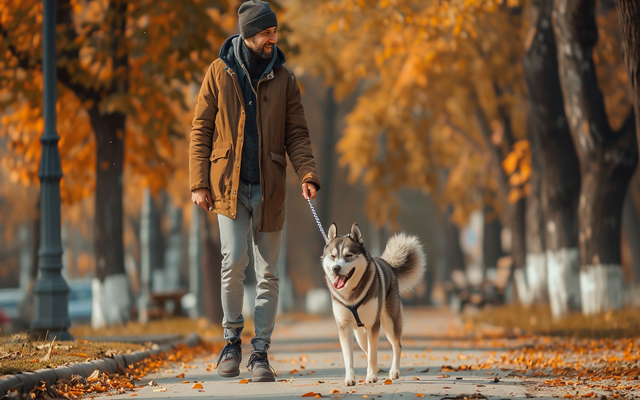Does your once perfectly behaved pup suddenly seem possessed by the spirit of a mischievous gremlin? Maybe they’ve developed a newfound passion for redecorating your living room with chewed furniture, or perhaps their evenings are dedicated to serenading the neighborhood with an operatic performance of nonstop barking. Fear not, fellow dog lover! These unexpected behavioral changes, while frustrating, are often a sign your furry friend needs a little help communicating their needs.
In this guide, we’ll embark on a journey to crack the canine code, helping you understand why your dog might be acting out and equip you with the knowledge to address common behavioral issues. We’ll delve into the fascinating world of canine communication, explore positive reinforcement training techniques, and discover solutions to transform your furry friend from a mischievous maestro into a well-mannered companion.
So, grab your favorite treats (and maybe some earplugs for the barking phase), and let’s get started on creating a harmonious life with your dog!

Understanding Your Dog’s Communication
Ever feel like your dog gives you the cold shoulder, even though they’re staring right at you? Well, chances are they’re not being aloof – they’re simply trying to talk! Unlike humans, dogs communicate primarily through body language and vocalizations. By learning to “read” these signals, you can unlock a deeper understanding of your furry friend’s emotions and motivations.
Imagine this: You come home after a long day, eager to greet your pup. But instead of the usual tail wags and happy barks, you’re met with flattened ears, averted eyes, and a tucked tail. This combination might be your dog’s way of saying they’re feeling nervous or unsure. On the other hand, a wiggly body, a high tail wag, and excited barks probably translate to pure doggy joy at your return!
Here are some key aspects of canine communication to keep in mind:
- Tail Wags: Not all wags are created equal! A high, loose wag usually indicates excitement and happiness, while a low, slow wag might signal nervousness or fear.
- Body Posture: A relaxed posture with a lowered head and soft eyes suggests a friendly and approachable dog. Conversely, a stiff body, raised hackles, and a direct stare could be a sign of aggression or dominance.
- Facial Expressions: Just like humans, dogs use facial expressions to communicate. A furrowed brow and wrinkled nose might indicate confusion or fear, while a relaxed face with a slightly open mouth often signifies contentment.
- Vocalizations: Growls, whines, barks, and even playful yelps all have specific meanings in the canine world. Pay attention to the context and pitch of the vocalization to understand what your dog is trying to tell you.
By becoming more attuned to your dog’s body language and vocalizations, you can build a stronger bond, improve training effectiveness, and ultimately create a more harmonious relationship with your furry companion.
Common Dog Behavioral Issues and Solutions
Let’s face it, no dog is perfect. Even the most adorable pup can develop some less-than-desirable behaviors. But before you throw your hands up in despair, remember that most behavioral issues can be addressed with patience, understanding, and the right training techniques.
In this section, we’ll explore some of the most common canine conundrums and equip you with practical solutions to transform your furry friend from a mischievous maestro into a well-mannered companion.
Destructive Behaviors:
Does your dog seem to have an insatiable desire to redecorate your living room with chewed furniture? This destructive behavior can be caused by a variety of factors, including boredom, teething anxiety, or separation anxiety.
- Here’s the table you requested to summarize Destructive Behaviors:
| Destructive Behavior | Common Causes | Prevention Tips |
Positive Solutions
|
| Chewing | Boredom, Teething Anxiety, Separation Anxiety | Provide chew toys, rotate them regularly, address underlying anxieties |
Engage in playtime, use puzzle feeders, redirect chewing to appropriate objects
|
| Digging | Natural instinct, Boredom, Seeking Attention | Designate a digging area, provide enrichment toys |
Supervise outdoor time, redirect digging to appropriate spot, offer positive reinforcement for desired behavior
|
| Scratching | Allergies, Fleas, Anxiety | Address underlying medical issues, provide scratching posts |
Keep nails trimmed, redirect scratching to appropriate surfaces
|
Elimination Issues:
Potty training mishaps can be frustrating for both you and your dog. If your pup is having accidents indoors, there could be a medical reason, so a visit to the vet is always a good first step. Once medical issues are ruled out, consistent crate training and establishing a regular potty schedule can help your dog learn the ropes.
Barking Issues:
Does your dog seem to have an Olympic barking talent? Excessive barking can be caused by boredom, anxiety, territoriality, or even alerting you to something they perceive as a threat. Identifying the trigger is key! If your dog barks at strangers, positive reinforcement training techniques like counterconditioning and desensitization can be very effective.
Other Common Issues:
Jumping up, leash reactivity, and separation anxiety are just a few other behavioral challenges you might encounter. Remember, the key to addressing any behavioral issue is to remain patient, consistent, and positive. Consider consulting a qualified dog trainer for personalized guidance, especially for more complex issues.
Remember, a well-behaved dog is a happy dog! By understanding the root cause of your dog’s behavior and implementing positive reinforcement training techniques, you can create a more fulfilling and harmonious relationship with your furry friend.
Conclusion
Imagine this: You walk into your living room, greeted by a wagging tail and a happy pup instead of shredded furniture. You enjoy an evening stroll without your dog pulling on the leash or barking at every passerby. These are just a few of the rewards that come with addressing your dog’s behavioral issues.
By understanding your dog’s communication, utilizing positive reinforcement training techniques, and seeking professional help when needed, you can create a happy and well-behaved canine companion. Remember, a little patience and a whole lot of love go a long way in building a strong and lasting bond with your furry friend.

FAQ
Is place mat training just for puppies?
While ideal for puppies, place mat training can benefit dogs of all ages, especially those who struggle with impulse control or mealtime anxiety. It provides a designated calming zone that can help your dog relax and focus during meals.
My dog gets bored with the place mat. How can I keep them engaged?
Introduce variety! Use different textures or materials for the mat (silicone, woven, etc.) or try incorporating short training exercises like “sit” or “stay” while on the mat. You can also gradually increase the duration your dog stays on the mat before receiving a reward.
My dog chews on the place mat. Is this normal?
Some puppies might chew on the mat initially. Offer them a more appropriate chew toy while on the mat, and redirect their chewing behavior with praise when they choose the toy instead. Using a durable mat specifically designed for dogs can also help.
Can a place mat help with dog separation anxiety?
While not a standalone solution, place mat training can create a sense of security and calmness, potentially reducing separation anxiety symptoms. It can be used alongside crate training or other separation anxiety management techniques, providing your dog with a familiar and comforting spot during alone time.

My job is to make sure every fact is right and every article is a joy to read. I’m kind of like a dog trainer for information – I make it behave!

